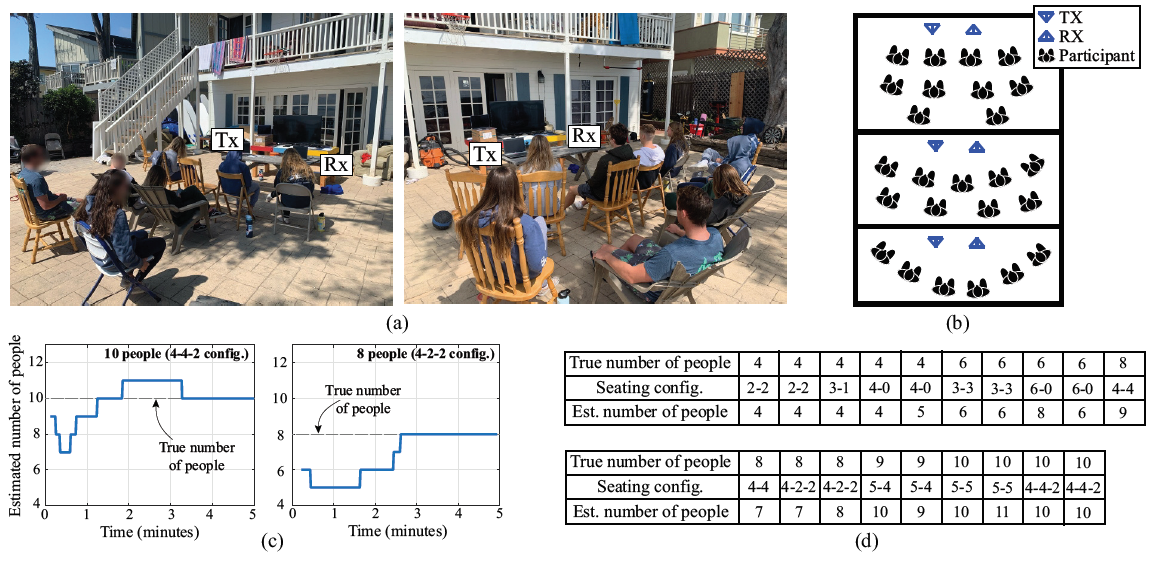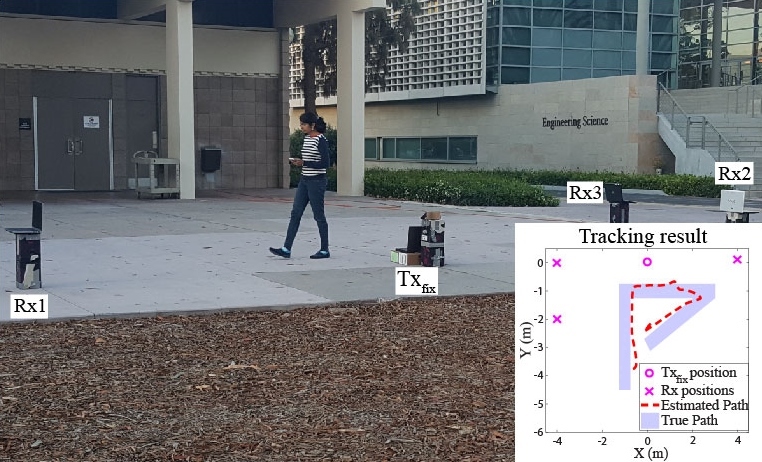
|
Belal s. a. Korany
Senior Engineer
|

|
Belal s. a. Korany
Senior Engineer
|
WiFi-based applications: e.g. Localization, activity recognition, health monitoring, and others.
Wireless Communications.
Next generation wireless networks.

|
Senior Wireless Engineer, Qualcomm, San Diego, 2021--present |

|
Summer Intern at Qualcomm, NJ, USA, 2016 Recipient of the Roberto Padovani Award for interns with extraordinary technical talent. - Analyzed wireless protocols and algorithms for 5G mmWave Networks. - Simulated the 5G access network at link-level and system-level. |

|
Wireless Systems Engineer at Intel Labs, Cairo, Egypt, 2013-2014 - Developed an interference mitigation solution for WiFi/LTE coexistence on Intel platforms. |

|
Teaching assistant at the ECE department, Cairo University, Egypt, 2012-2015 - Assisted in teaching courses on wireless communications, analog and digital communication systems, signal processing, information and coding theory, and electric circuits. |
Developed a new and rigorous mathematical model to describe the fidgeting of stationary people. A fidget describes the small in-place motion that a stationary person is frequently involved in (such as pose adjustments).
Proposed a method to estimate the number of people in an area based on their collective fidgeting behavior, inspired by old queuing theory problems.
Experimentally validated our proposed approach by counting up to 10 people in 4 different areas, showing that the counting error is 0 or 1 only for 93.6% of the time.

Developed a new and rigorous mathematical model to describe the WiFi signals measured on a device near a sleeping patient during different kinds of sleep motions.
Proposed a WiFi processing pipeline to detect these nocturnal motions and classify them into seizures and normal movements.
Experimentally validated our proposed approach using simulated seizures from 20 actors, showing that our proposed framework can detect 94% of nocturnal seizures, with a very low probability of false alarm.
Showed how vision data can be translated to the RF domain.
Enabled WiFi-based gym activity classification by only using online available videos from YouTube.
Extensively tested the proposed pipeline with several experiments.

Introduced XModal-ID: a novel system that uses WiFi to determine if a person walking behind a wall is the same as one walking in a given video footage.
Extended the proposed WiFi-based identification system to simultaneously identify multiple people through walls based on their gaits and Angles-of-Arrival.
Extensively validated the proposed framework with several experiments by showing how WiFi cards of laptops can identify people through walls.

Proposed a particle-filter-based algorithm to track a single person using the WiFi received power.
Extended the tracking algorithm to track multiple-people simultaneously using 3 laptops.

Demonstrated that AoA estimation using only signal magnitude is possible, without signal phase.
Mathematically related AoA to power spectrum content and developed antenna array design strategy.
Experimentally validated approach using a robot to synthesize arrays and measure WiFi magnitude
Demonstrated that AoA estimation using only signal magnitude is possible, without signal phase.
Mathematically related AoA to power spectrum content and developed antenna array design strategy.
Experimentally validated approach using a robot to synthesize arrays and measure WiFi magnitude
Y. Mostofi, C. R. Karanam, and B. Korany , "System and method of angle-of-arrival estimation, object localization, and target tracking, with received signal magnitude," U.S. Patent Application No. 62/656,050, April 2018.
A. S. Ibrahim, M. F. Marzban, and B. S. Amin , "Methods and devices for interference variance estimation and interference cancellation," U.S. Patent 9,794,097, issued Oct 2017.
B. Korany and Y. Mostofi, "Nocturnal Seizure Detection Using Off-the-Shelf WiFi," in the IEEE Internet of Things (IoT) Journal, 2021.
B. Korany, H.Cai, and Y. Mostofi, "Multiple People Identification Through-Walls Using Off-the-Shelf WiFi," in the IEEE Internet of Things (IoT) Journal, vol. 8, no. 8, pp. 6963-6974, April 2021. (Impact factor: 9.9)
H. Cai*, B. Korany*, C. R. Karanam*, and Y. Mostofi, "Teaching RF to Sense without RF Training Measurements," in proceedings of the ACM on Interactive, Mobile, Wearable, and Ubiquitous Technologies (IMWUT), vol. 4, no. 4, December 2020. [Data and Codes]
B. S. Amin, A. S. Ibrahim, M. H. Ismail, and H. M. Mourad, "Precoding and Power allocation Algorithms for Device-to-Device Communication in Massive MIMO Networks," in Wireless Networks, vol. 24, no. 3, pp. 925-942, April 2018.
A. Pallaproly, B. Korany, and Y. Mostofi, "Analysis of Keller Cones for WiFi Imaging", in IEEE Radar Conference, 2023.
A. Pallaprolu, B. Korany, and Y. Mostofi, "Wiffract: A New Foundation for RF Imaging via Edge Tracing," in ACM International Conference on Mobile Computing and Networking (MobiCom), 2022.
B. Korany and Y. Mostofi, "Counting a Stationary Crowd Using Off-the-Shelf WiFi," in proceedings of the the 19th ACM International Conference on Mobile Systems, Applications, and Services (MobiSys), June 2021. (acceptance rate: 21.5%) [Project page]
B. Korany*, C. R. Karanam*, H. Cai*, and Y. Mostofi, "XModal-ID: Using WiFi for Through-Wall Person Identification from Candidate Video Footage," in proceedings of the 25th Annual International Conference on Mobile Computing and Networking, (MobiCom), Oct 2019. (acceptance rate: 18.9%) [Project page][Slides]
C.R. Karanam, B. Korany, and Y. Mostofi, "Tracking from One Side -- Multi-Person Passive Tracking withWiFi Magnitude Measurements," in proceedings of the 18th ACM International Conference on Information Processing in Sensor Networks (IPSN), April 2019. (acceptance rate: 27%)
B. Korany, S. Depatla, and Y. Mostofi, "Subspace-Based Imaging Using Only Power Measurements," in proceedings of the 10th IEEE Sensor Array and Multichannel Signal Processing Workshop, July 2018.
B. Korany*, C. R. Karanam*, and Y. Mostofi, "Adaptive Near-Field Imaging with Robotic Arrays," in proceedings of the 10th IEEE Sensor Array and Multichannel Signal Processing Workshop, July 2018.
C.R. Karanam*, B. Korany*, and Y. Mostofi, " Magnitude-Based Angle-of-Arrival Estimation, Localization, and Target Tracking," in proceedings of the 17th ACM/IEEE International Conference on Information Processing in Sensor Networks (IPSN), April 2018. (acceptance rate: 26.5%)
B. S. Amin, Y. R. Ramadan, A. S. Ibrahim, and M. H. Ismail, "Power allocation for Device-to-Device Communication Underlaying Massive MIMO Multicasting Networks," in proceedings of IEEE Wireless Communications and Networking Conference (WCNC) 2015, pp.1219-1224, March 2015.